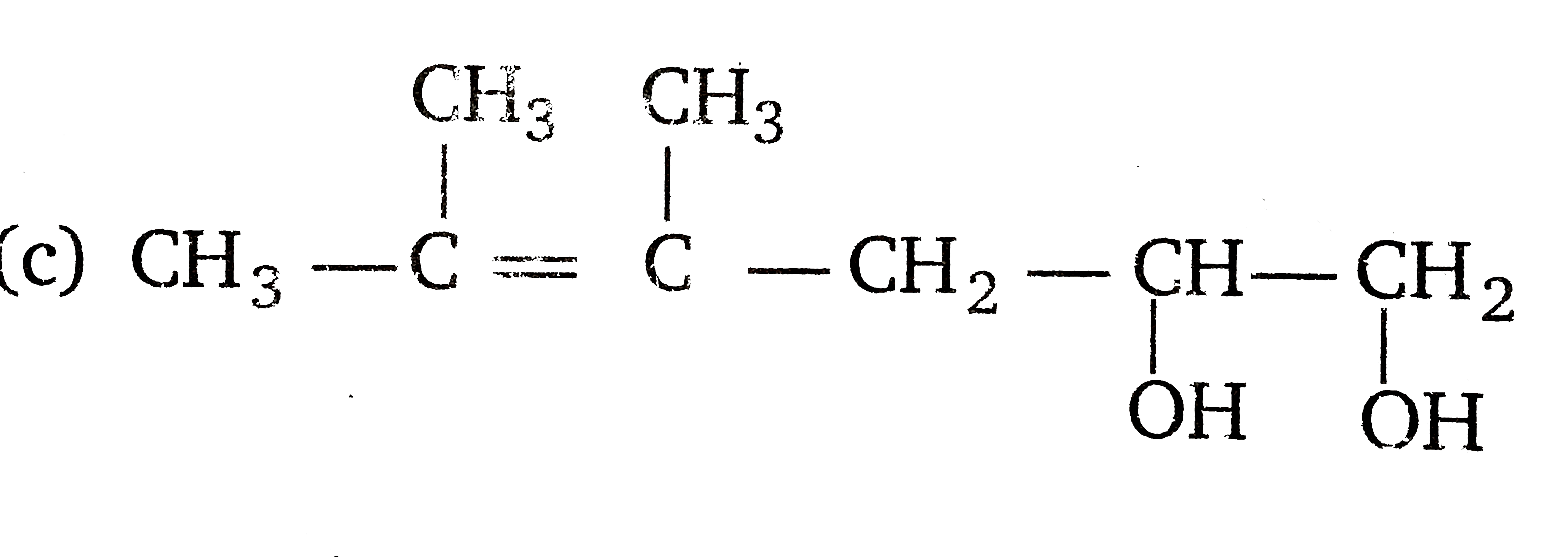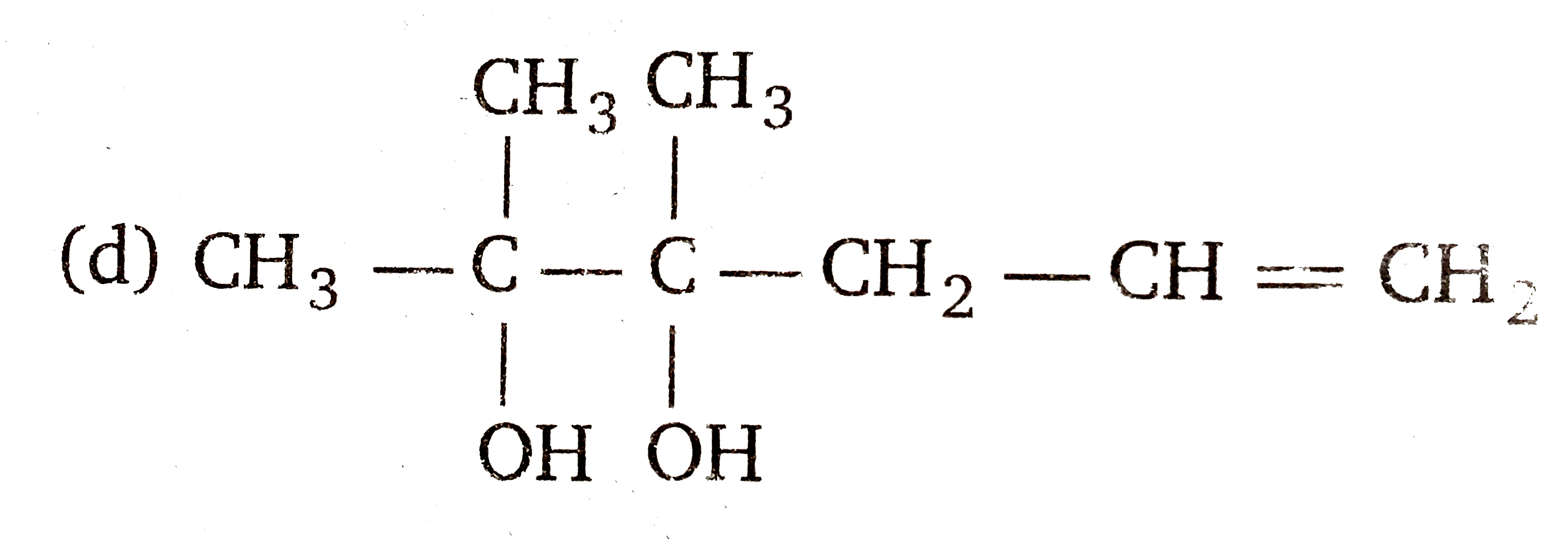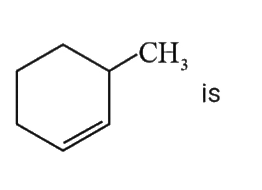Predict the major product of acid catalysed dehydration of
(i) 1-methylcyclohexanol and (ii) butan-1-ol
To predict the major product of acid-catalyzed dehydration of (i) 1-methylcyclohexanol and (ii) butan-1-ol, we will follow these steps:
1. Identify the Structure:
- 1-methylcyclohexanol has the structure where a hydroxyl group (OH) is attached to a cyclohexane ring, and a methyl group (CH3) is attached to the first carbon of the ring.
2. Protonation of the Hydroxyl Group:
- In the presence of an acid (like H2SO4), the hydroxyl group (OH) gets protonated, turning it into a better leaving group (water, H2O).
3. Formation of Carbocation:
- Once water leaves, a carbocation is formed. In this case, the carbocation can be formed at the carbon where the OH group was attached.
4. Rearrangement:
- The carbocation can rearrange to form a more stable carbocation. In this case, the carbocation can shift to the carbon adjacent to the one where the OH was attached, leading to a more substituted and stable carbocation.
5. Formation of Alkene:
- The loss of a hydrogen atom from the adjacent carbon leads to the formation of a double bond, producing the alkene. The more substituted alkene will be the major product.
6. Major Product:
- The major product formed will be 1-methylcyclohexene, where the double bond is between the carbon that was originally attached to the OH group and the adjacent carbon.
(ii) Dehydration of Butan-1-ol:
1. Identify the Structure:
- Butan-1-ol has the structure CH3-CH2-CH2-CH2OH.
2. Protonation of the Hydroxyl Group:
- Similar to the first case, the hydroxyl group is protonated by the acid, forming a better leaving group.
3. Formation of Carbocation:
- The loss of water generates a primary carbocation initially, which is less stable.
4. Rearrangement:
- The primary carbocation can rearrange to form a more stable secondary carbocation by a hydride shift from the adjacent carbon.
5. Formation of Alkene:
- The loss of a hydrogen atom from the adjacent carbon leads to the formation of a double bond.
6. Major Product:
- The major product will be 2-butene, where the double bond is between the second and third carbons, making it more substituted and stable.
Summary of Major Products:
- (i) The major product of the dehydration of 1-methylcyclohexanol is 1-methylcyclohexene.
- (ii) The major product of the dehydration of butan-1-ol is 2-butene.
- 1-methylcyclohexanol has the structure where a hydroxyl group (OH) is attached to a cyclohexane ring, and a methyl group (CH3) is attached to the first carbon of the ring.
- In the presence of an acid (like H2SO4), the hydroxyl group (OH) gets protonated, turning it into a better leaving group (water, H2O).
- Once water leaves, a carbocation is formed. In this case, the carbocation can be formed at the carbon where the OH group was attached.
- The carbocation can rearrange to form a more stable carbocation. In this case, the carbocation can shift to the carbon adjacent to the one where the OH was attached, leading to a more substituted and stable carbocation.
- The loss of a hydrogen atom from the adjacent carbon leads to the formation of a double bond, producing the alkene. The more substituted alkene will be the major product.
- The major product formed will be 1-methylcyclohexene, where the double bond is between the carbon that was originally attached to the OH group and the adjacent carbon.
- Butan-1-ol has the structure CH3-CH2-CH2-CH2OH.
- Similar to the first case, the hydroxyl group is protonated by the acid, forming a better leaving group.
- The loss of water generates a primary carbocation initially, which is less stable.
- The primary carbocation can rearrange to form a more stable secondary carbocation by a hydride shift from the adjacent carbon.
- The loss of a hydrogen atom from the adjacent carbon leads to the formation of a double bond.
- The major product will be 2-butene, where the double bond is between the second and third carbons, making it more substituted and stable.
- (i) The major product of the dehydration of 1-methylcyclohexanol is 1-methylcyclohexene.
- (ii) The major product of the dehydration of butan-1-ol is 2-butene.
Similar Questions
Knowledge Check
- Question 1 - Select One
The major product of acid catalysed dehydration of 2-methylcyclohexanol and butan-1-ol are respectively
A1-methylcyclohexene and but-1-eneB2-methylcyclohexene and but-2-eneC2-methylcyclohexene and butaneD1-methylcyclohexene and but-2-ene. - Question 2 - Select One
Predict the major product of the reaction.
 A
A B
B C
C D
D
- Question 3 - Select One
The major product obtained on acid-catalysed hydration of 2-phenylpropane is
A2-Phenylpropan-2-olB2-Phenylpropan-1-olC3-Phenylpropan-2-olD1-Phenylpropan-1-ol
What is meant by Hydroboration - oxidation reaction? Illustrate it with an example.
(b) Predict the major product of acid catalysed dehydration of 1 - methylcyclohexanol.View SolutionThe major product formed by the acid catalysed hydration of
 View Solution
View SolutionPredict the product (major)
 View Solution
View Solution , Predict major product of the reaction :View Solution
, Predict major product of the reaction :View SolutionThe correct order of acid catalysed dehydration of alcohols is:
View Solution

